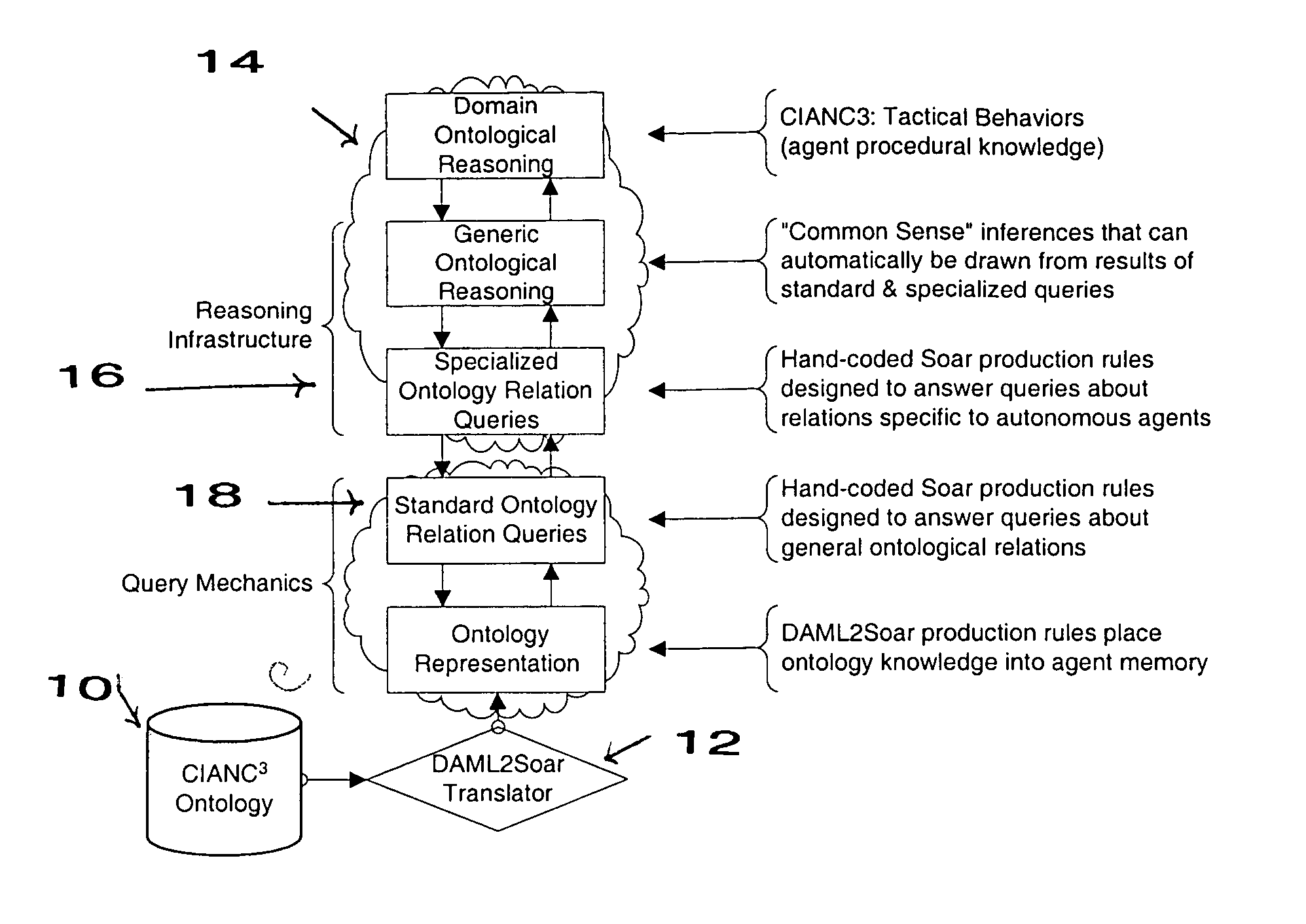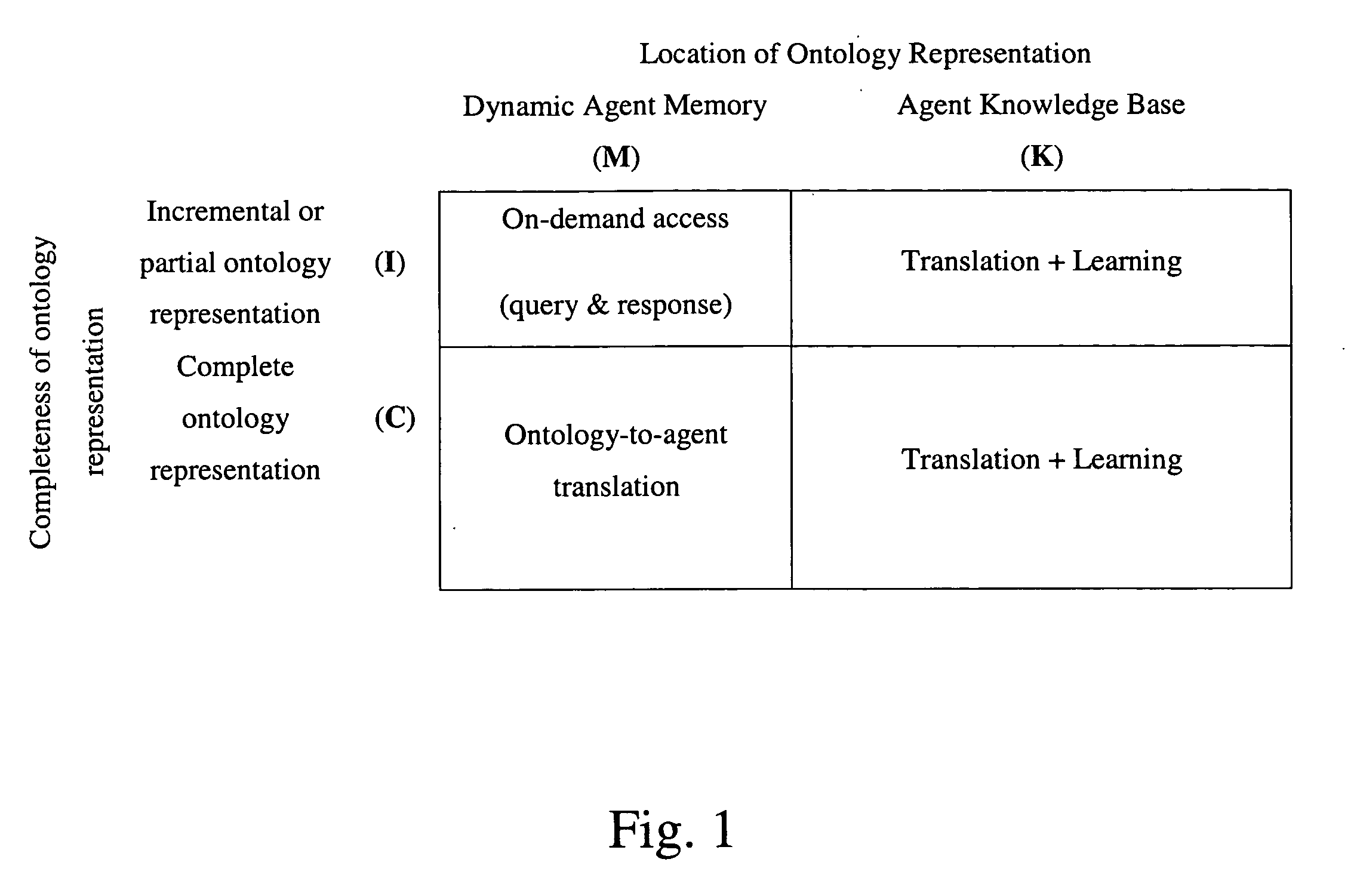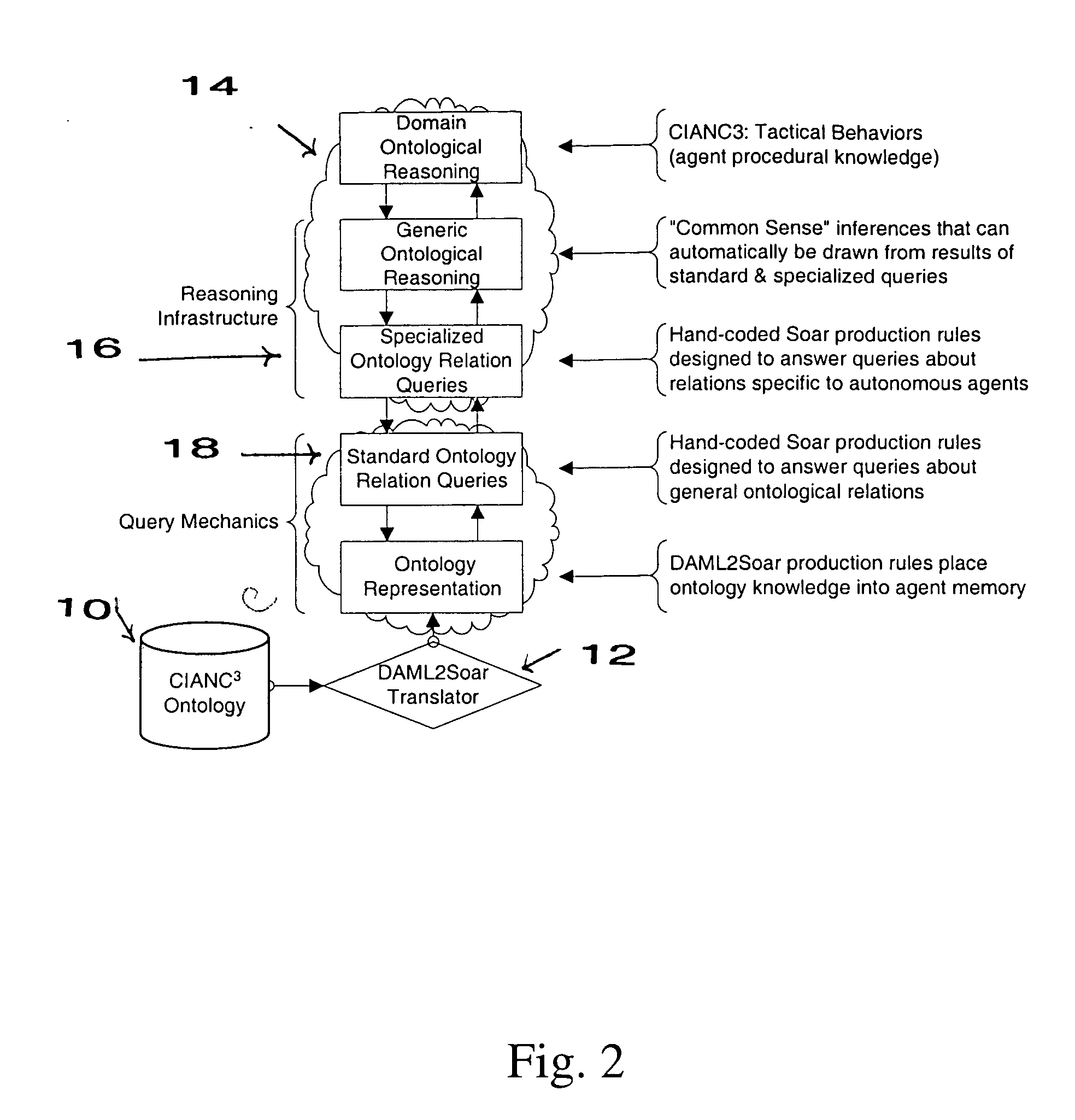Method and apparatus for providing rule-based, autonomous software agent with ontological information
a software agent and ontological information technology, applied in the field of autonomous, rule-based software agents, can solve the problems of difficulty in reusing (portions of) rule bases, difficulty in acquiring and entering knowledge about the world into rule-based agents,
- Summary
- Abstract
- Description
- Claims
- Application Information
AI Technical Summary
Benefits of technology
Problems solved by technology
Method used
Image
Examples
Embodiment Construction
[0023] The preferred embodiment of the invention translates ontological information into rules that are stored in computer files. These rules can then be sourced by the rule-based system.
[0024] The current version takes as input an ontology represented in DAML+OIL or OWL XML format, and translates it into rules usable in the Soar cognitive architecture. The program reads the ontology from a DAML+OIL XML file. It then generates a rule for each class within the ontology, and records the generated rules into a different (Soar) file. To use the rules, an agent reads the Soar file. The rules are entered into agent memory. Upon execution, the rules generate a Soar-specific translation of the original ontology in the agent's working memory.
[0025] Alternate methods include representing the condition sides of rules (conditions under which rules will apply) and extending the translator to additional ontological relations. In both cases, these represent natural extensions of the basic concep...
PUM
 Login to View More
Login to View More Abstract
Description
Claims
Application Information
 Login to View More
Login to View More - R&D
- Intellectual Property
- Life Sciences
- Materials
- Tech Scout
- Unparalleled Data Quality
- Higher Quality Content
- 60% Fewer Hallucinations
Browse by: Latest US Patents, China's latest patents, Technical Efficacy Thesaurus, Application Domain, Technology Topic, Popular Technical Reports.
© 2025 PatSnap. All rights reserved.Legal|Privacy policy|Modern Slavery Act Transparency Statement|Sitemap|About US| Contact US: help@patsnap.com



